Tag: jim stoppani
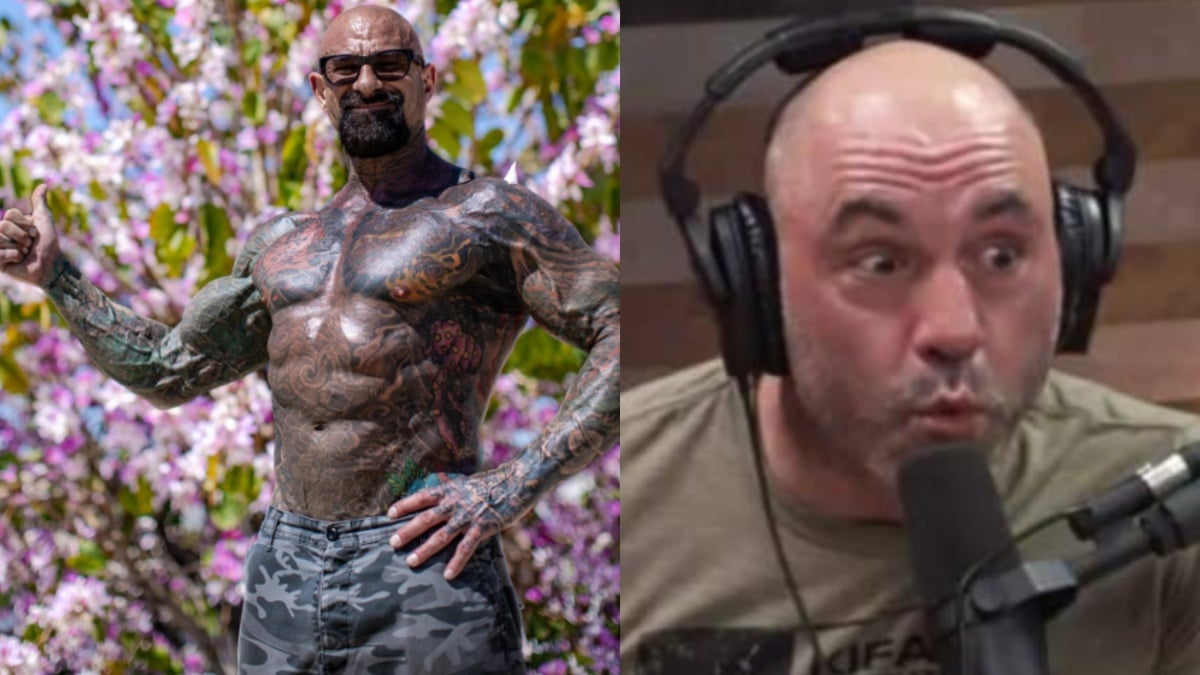
Jim Stoppani Responds After Joe Rogan Calls His Physique ‘Perfect’ & ‘Super Jacked’
NPC bodybuilder, fitness expert, and exercise psychologist, Jim Stoppani has developed a solid reputation for his knowledge regarding health and wellness over the years. In a recent podcast episode of the Joe Rogan Experience, Joe Rogan praised Stoppani for his ripped physique at 55 years old.
As a renowned expert in exercise science, sports nutrition, and supplementation, Stoppani’s ability to relay crucial information about workouts is unmatched. He holds a PhD in exercise psychology and has authored numerous fitness publications such as “The Encyclopedia of Muscle & Strength.” Stoppani takes an evidence-based approach to fitness and has built a successful online presence dedicated to helping people achieve their goals.
Meanwhile, Joe Rogan, a former kickboxer, steadily built his empire through entertainment endeavors. In addition to TV appearances, Rogan serves as a color commentator for the mixed martial arts promotion UFC (Ultimate Fighting Championship). Though, perhaps Rogan’s most-well known contribution to the world is his famous podcast, which has become a leading source of information for people around the world.
Before hearing Stoppani’s reaction, check out what Joe Rogan had to say about his physique on a recent appearance of The Joe Rogan Experience:
“Jim Stoppani is interesting too because he’s fully fuc**ng tattooed up including his head, all of his head but he’s a very smart guy, like, like, you look at him and you go, ‘I bet that guy has his di** tatooed’. Not that I think about di** sir, but he’s got them everywhere, he’s super jacked.”
While someone during the video mentioned Stoppani may have gone overboard with tattoos, Rogan quickly dismissed the notion.
“Yeah super jacked, but now, everything is covered, including – look at that, that’s his neck, that’s his hands, he’s ja-ja-ja jacked, shut up, he’s perfect, you leave my boyfriend alone. All kidding aside, I go to his Instagram page all the time, it’s very informational, very interesting videos too that he has on Youtube he’s clearly a very bright guy and he’s super jacked, you see his neck, it goes all the way up his back even the back of his head, super jacked. Anyway,”
“I’ve received many endorsements over the years, but none are as positive and FUNNY as @joerogan. Thanks for the love, Joe!” Stopppani wrote in the caption.
One of the last times Stoppani’s name drew headlines was in 2017 stemming from a lawsuit with Bodybuilding.com. Ultimately, a settlement was reached and Stoppani was afforded the opportunity to continue selling premium supplement products and merchandise.
RELATED: Joe Rogan Reveals ‘Everything He Takes’ to Maintain His Physique
Despite a schedule jam-packed with obligations, Stoppani always makes time for the gym. Many, including, Joe Rogan, value Jim Stoppani as a credible member of the fitness community for his understanding of human anatomy and biological function.
usechatgpt init success
Published: 11 May, 2023 | 1:27 PM EDT
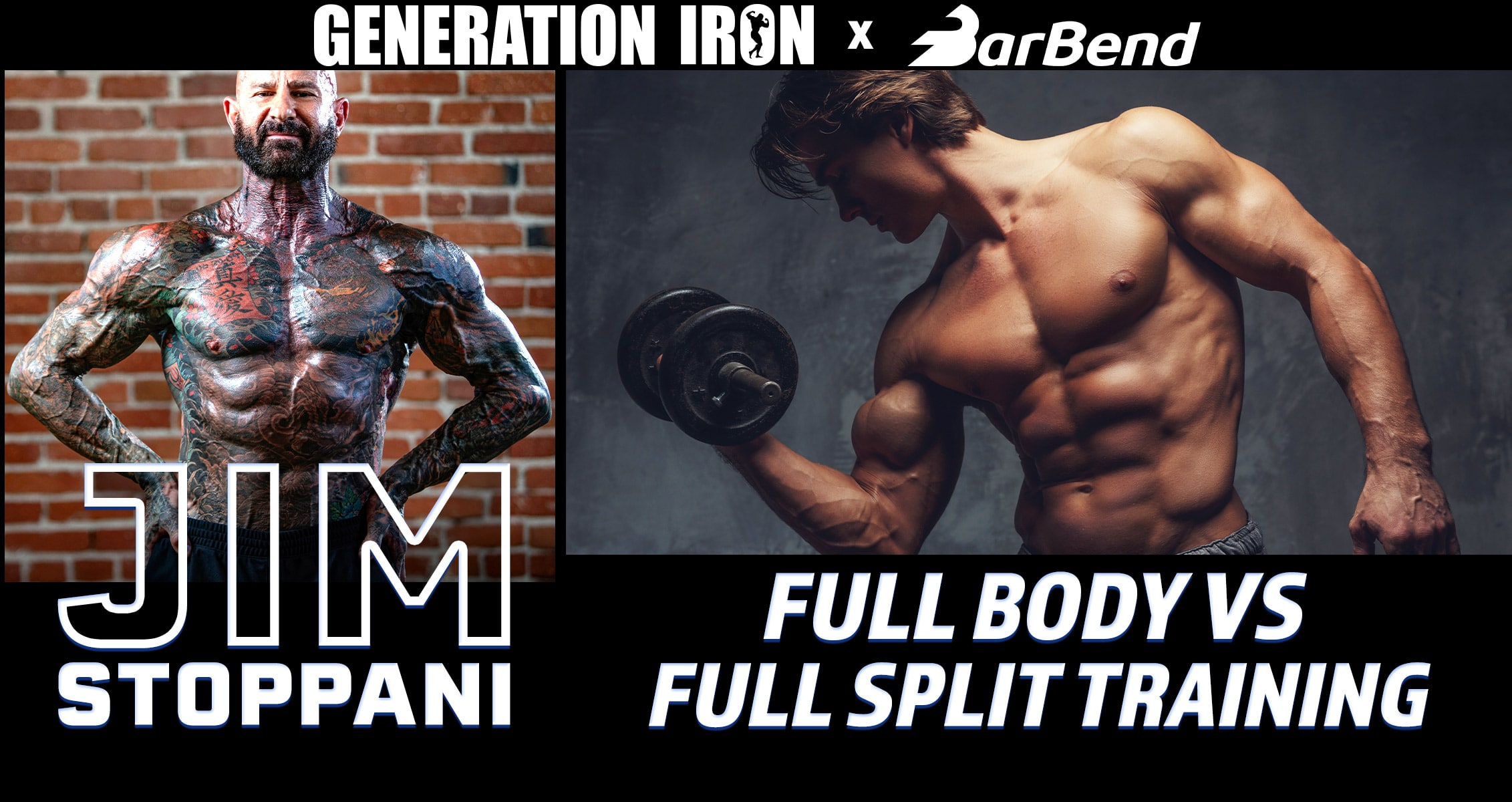
Jim Stoppani: Full Body Vs Full Split Training, Explained
[embedded content]
Jim Stoppani breaks down full body training compared to his hybrid model, full split training. Which is best for your fitness goals?
In 2007, Jim Stoppani suffered an injury that made him reevaluate how he would continue his training. Now in his 50s, Stoppani can no longer train with the exact same high energy that he used to when he was young without facing even more injuries that slow him down in the gym. So he turned to full body training – a method that is great for overall fitness but not exactly ideal for massive muscle growth. This led Stoppani to invent his own hybrid training method – full split training – to focus a bit more on muscle growth while also avoiding further serious injury. In our latest GI Exclusive in collaboration with Barbend, Jim Stoppani compares full body training to full split training and explains which technique is best for your fitness needs.
A typical competitive bodybuilder normally avoids a typical full body training routine. This is due to it’s inability to really grow muscle on a level of a mass monster. However, most do not desire to or are not able to train at that extreme level. That’s why full body training is a great method for those looking to stay in shape, get a bit lean, and remain healthy.
However, even non-competitive bodybuilders might want to pack on a bit more muscle than full body training can provide. That’s why Jim Stoppani invented a hybrid method called full split training – combining the benefits of full body training with a typical bodybuilder split training method. Let’s break it down.
What is full body training?
In simplest terms, full body training is the act of training each body part during one workout each day. Typically this takes the form of doing one exercise per body part – then repeating the next day. Jim Stoppani explains that for the average person, this method is perfectly fine. It helps prevent injuries in the gym and provides benefits both for cardiovascular health and in terms of strength and muscle.
But Jim Stoppani also admits that full body training will rarely help build you into a mass monster – or even a medium sized muscular person. Those looking for the pump and beefing up have to look elsewhere in terms of workout methods.
Ultimately, full body training is a great way to help lose weight while also building muscle and strength. It’s perfect for building a lean and fit body. But Jim Stoppani has been a passionate fan of bodybuilding for most of his life. Typical full body training was not enough to suit his physique goals. That’s why he invented his own hybrid approach.
RELATED: Check out our review guide of the best home gym equipment of 2022 under $100.
What is full split training?
Jim Stoppani’s full split training technique combines a typical full body workout with a typical bodybuilding split training workout. The ultimate goal is to find a way to build more muscle and strength without going so far as to possibly injure yourself. This is a great method for those growing older in age that want to focus on size but can’t go all out like they used to in younger years.
At this moment, we’d like to pause and make something clear. Jim Stoppani doesn’t mince words when he makes this point. For those who are still competitively bodybuilding and holding mass monster size well into their 40s and 50s – if that’s still working there’s no need to pull back on workout intensity. But majority of individuals do not actively compete in bodybuilding. Which is why Stoppani’s full split training is a great middle ground for keeping muscle without pushing the body past its limit.
So how does full split training work? Jim Stoppani explains that you simply do a typical full body workout for the day – but each day of the week you pick one specific body part to additionally focus on. So in action – you do a full body workout of all body parts, but add an extra set of exercises to one body part to ensure that one is being pushed harder.
Then the next day, you pick a different body part to focus on and repeat. By the end of the week, each major body part will have gotten some extra attention – while also maintaining a full body workout style across the week.
Jim Stoppani sees this as meeting half way between the benefits and drawbacks of full body training vs the benefits and drawbacks of split training.
Wrap Up
Jim Stoppani tops off our conversation in this segment discussing injury during workouts and how age affects these kinds of injuries. While consistent fitness throughout an individual’s lifetime will help prevent injuries as we age – we cannot ignore that growing older raises new challenges. We all become more injury prone as we get older.
As Jim Stoppani puts it, “There’s no way around it. As you get older you are degenerating… we were not meant to live this long.”
It’s with that in mind (due to his own personal experiences with injury) that he developed the full split training technique. We must be honest with our aging bodies and do what is best to avoid serious injury – or even worse – irreversible injuries that further keep us out of the gym.
You can watch Jim Stoppani go into full detail about full body training and full split training in our latest GI Exclusive explainer video segment above!
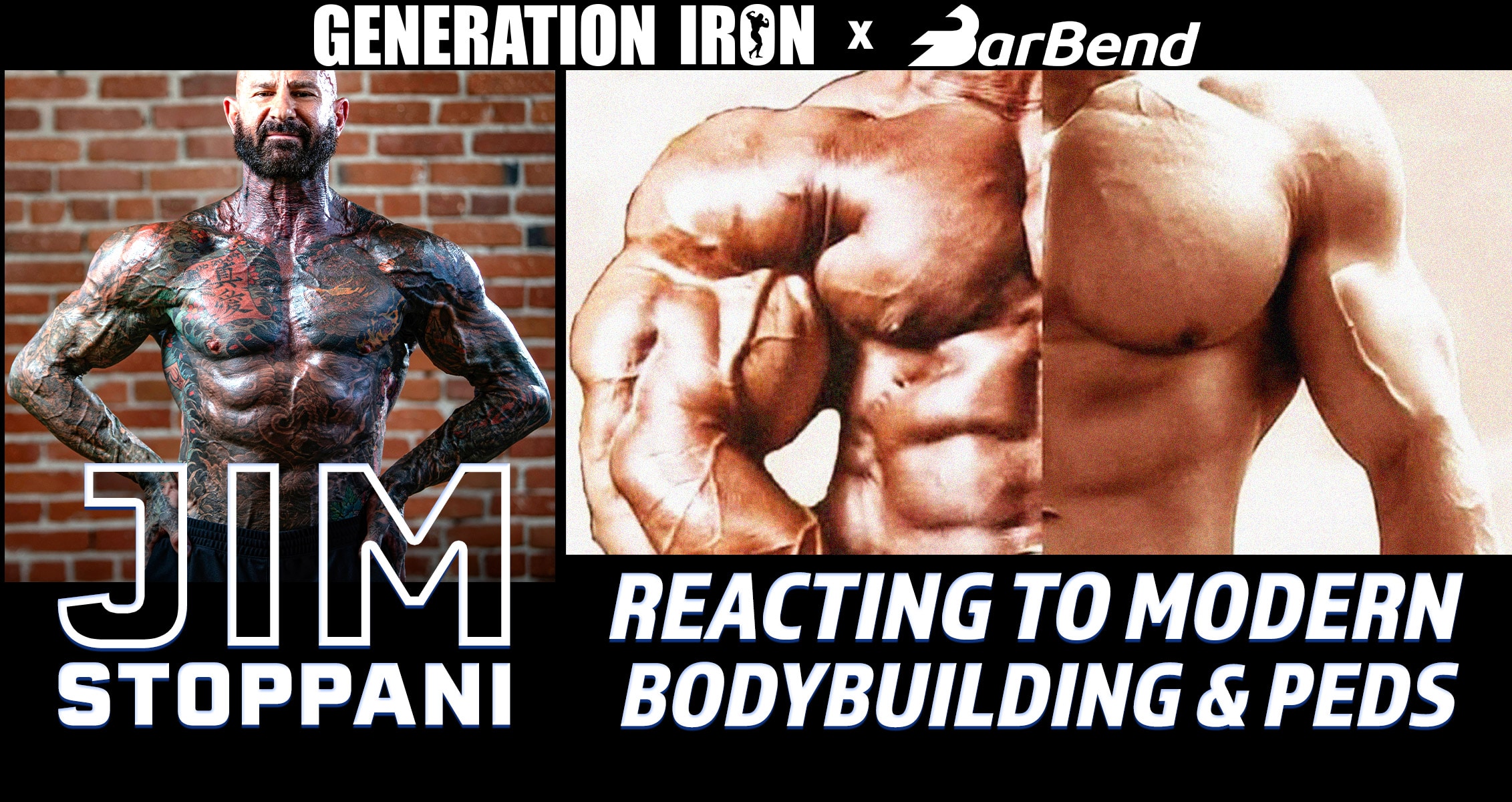
Jim Stoppani On Modern Bodybuilding: “The Sport Is Not Causing Drug Use, The People Are”
[embedded content]
Jim Stoppani reacts to modern bodybuilding, drug use, and respect in the sport today.
Jim Stoppani is an Exercise Physiologist and a passionate fan of bodybuilding. While he never became a career competitive bodybuilder – he did compete in the NPC and continues to track the sport closely to this day. This passion alongside his deep education and research has made him the perfect bridge between the love of bodybuilding and focusing on health. That’s why in our latest GI Exclusive partnered with Barbend, Jim Stoppani reacts to the current state of bodybuilding – including drug use and health dangers. Is it facing a crisis? Has it lost its way?
Competitive bodybuilding as we know it has existed in some form or another for at least 100 years. It exploded in the 60s and 70s during the Golden Era and has continued to break ground ever since. However, the world changes and with it the sport changes as well. With more history behind competitive bodybuilding, more criticism is brought up comparing the present to decades past. Is drug use worse? Are more bodybuilders dying? Are physiques today better or worse? The questions and criticisms are endless.
Much of the criticism is based on gut feelings, personal experience, or mob mentality. That’s why, during our conversation with Jim Stoppani, we asked him to share his reaction to bodybuilding today – combining his personal bodybuilding experience with expert researched knowledge. Cutting the bullsh*t from facts. Does Stoppani see a crisis in modern bodybuilding?
Jim Stoppani: “The Sport Is Not Causing Drug Use, The People Are”
Despite the recent news driving fear for the health of bodybuilding athletes today more than any other time in the history of the sport, Jim Stoppani still finds competitive bodybuilding a respectable sport as it is today. Stoppani does not believe that bodybuilding as a sport drives drug use – it’s the people and athletes behind it who do. But this isn’t just to lay the blame on athletes and call the irresponsible.
In fact, Jim Stoppani believes that the drive behind people to be the best in the world is what brings individuals to dangerous drug use. That’s not just in bodybuilding. That’s in every single sport in the world. Move beyond sports and it can be found in any arena where individuals strive to be elite.
Jim Stoppani, having competed in bodybuilding, understands the rare feeling of doing anything possible, including dangerous risks, to be the best in the world. To build one extra inch of muscle at all costs. It’s this drive that many average people, even bodybuilding fans, don’t really understand. Sadly, experiencing it directly is nearly the only way to truly understand it.
No matter the regulations or laws – people with this sort of drive will always find a way to possibly endanger themselves to be the best in the world. To be bigger and stronger at any cost.
Jim Stoppani Supports Education To Steer The Drive Behind Bodybuilders
So as Jim Stoppani understands it, professional and competitive bodybuilding will always be dangerous. Is it particularly more dangerous today than at any time in history? That cannot be proven without vigorous study. But what can be done, regardless of the current risks, is bring more education behind the strategies known in bodybuilding. We can’t remove the drive or the dark corners of markets to receive drugs – but we can help educate athletes further so they understand the risks.
Jim Stoppani respects bodybuilders. He loves the mass monsters all the way through to the Bikini competitors. He respects their drive despite limited prize money and, in some cases, even respect within their own sport. Jim Stoppani will not disparage the love that bodybuilders have for perfecting their physique. He can only hope to bring more education to help those driven athletes stay safer. It can never be completely safe – but to make it as safe as possible is most important.
Wrap Up
So is modern bodybuilding facing a crisis? Jim Stoppani doesn’t see anything particularly more dangerous now compared to the past. The danger has always been there – but technology has allowed us to see it faster and due to the immediacy of social media. That doesn’t mean that things can’t be improved. All professional sports are dangerous on some level – but their can always be more effort made to make it safer.
You can watch Jim Stoppani’s thoughts on modern bodybuilding and the current state of drug use and health in our latest GI Exclusive interview segment above!
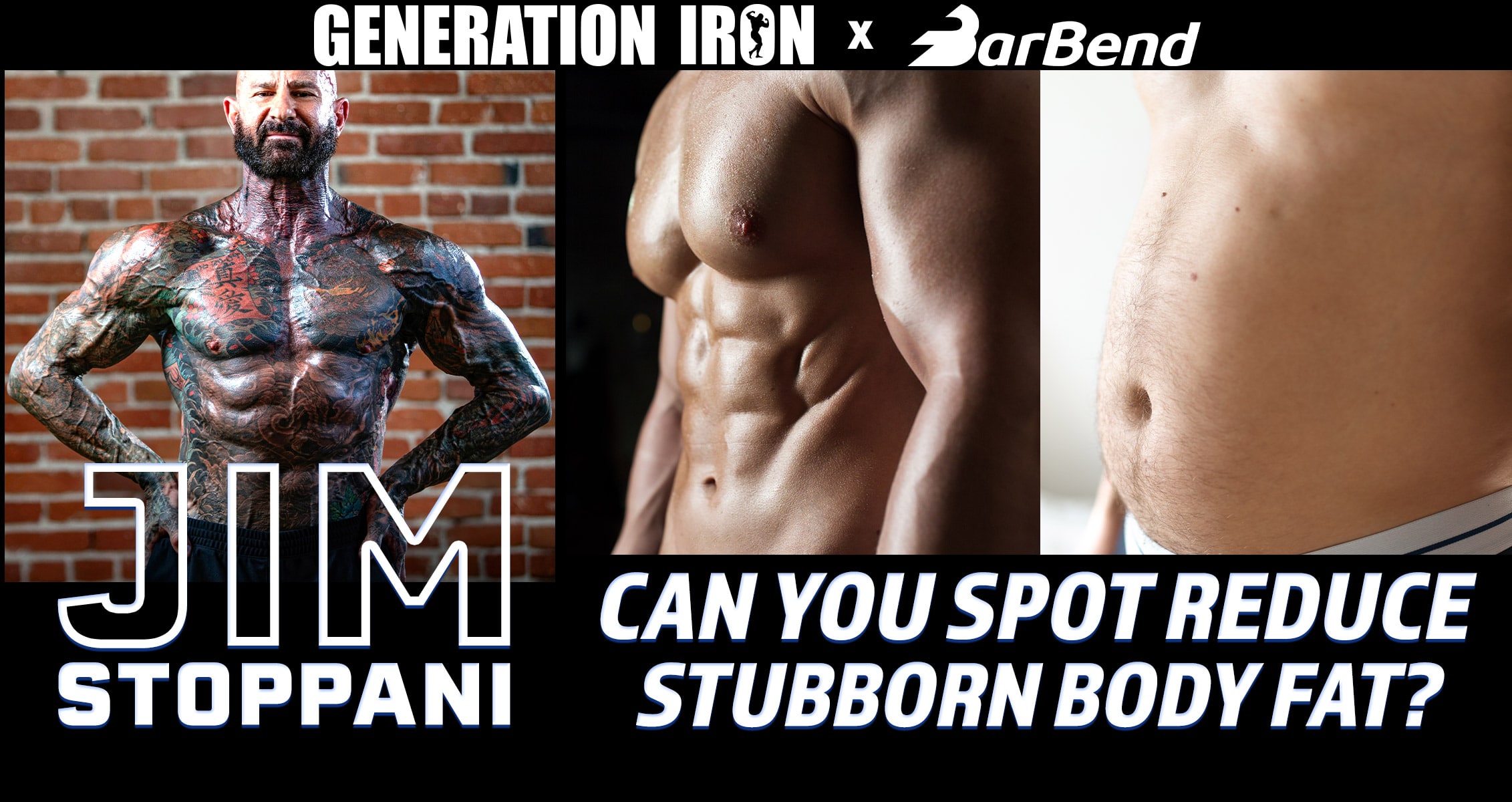
Jim Stoppani: Can You Spot Reduce Stubborn Body Fat With This Science-Backed Technique?
[embedded content]
Jim Stoppani talks about the myth of spot reducing stubborn body fat… and the one promising study that might turn the myth into a reality
Everyone from bodybuilders to the average Joe wishes that stubborn body fat can be reduced. But science has proved time and time again that this is impossible. No, doing crunches will not burn belly fat (though it will strengthen your core and abs). This is disappointing for those who have a muffin top they are trying to lose. But it’s also a real challenge for bodybuilders who need to keep their physique in perfect proportion despite lagging body parts. That’s why we turned to Jim Stoppani for some enlightenment in regards to burning stubborn body fat. In our latest GI Exclusive, Jim Stoppani reveals a study that just might prove spot reducing fat is finally possible.
Not everyone gains weight evenly. While some my gain wait uniformly, others have fat that parks in random and frustrating places. Whether it’s a pot belly, love handles, or fatty thighs. Disproportionate weight gain is annoying at best and self-hating at worst. It can make off the rack clothing hard to fit and shopping challenging. It can make you feel bad about your self image. To be frank, it sucks. So it’s no surprise that so many individuals turn towards spot reduce tactics, plans, and products. None of them work, mind you, but people want so desperately to find an answer they buy in.
Jim Stoppani also points out that this poses an additional challenge for competitive bodybuilders during contest prep. The main goal after bulking is to cut down and perfect an aesthetic symmetrical physique. But if you have genes that hang fat in some places longer than others – cutting weight becomes more challenging. How do you cut fat in your quads without reducing size in your chest or arms? It’s part of the meticulous challenge of being a bodybuilder.
While Jim Stoppani agrees that, in general, spot reducing fat is not possible. He did come across one study that might change the game if it can be corroborated and repeated with the same success.
Can extremely high weightlifting volume spot reduce fat?
Jim Stoppani dives into a study that had subjects do extremely high reps of leg extensions. And by extremely high, he’s talking about 100+ reps. What the study showed is that the high rep exercise pulled from the body’s fat for energy. This is typical especially when carb or glucose stores are low before an exercise. But what was interesting of note – is that the study was able to track where the fat stores were coming from. The study showed that the fat was being burned specifically from the quads.
Jim Stoppani explains that this method was essentially cardio with leg extensions. And that one can assume based on this study – that the same kind of high rep exercise on any body part can produce the same results. Now this would need to be studied further – but it showed promise that spot reducing fat may be possible.
Is this something that can translate into competitive bodybuilding? That remains to be seen. It’s also not clear how effective that targeted fat loss is. How much fat is being burned from the area? Would other areas of the body still reduce in size? That would still be a problem for mass monster bodybuilders during contest prep.
Likely, there is no silver bullet to magically spot reduce fat. And while this might not be helpful for a pro bodybuilder – the high rep weightlifting tactic might be good for the average joe looking to trim down a pot belly and not worried about a perfect symmetrical physiue.
Wrap Up
The truth behind most exercise principles is that there is no easy way to stay fit. And there is no easy way to build muscle. However, these kind of tips and techniques can perhaps make a difference in the long run. It’s still challenging. It still requires consistency and focus. But perhaps this new study provided by Jim Stoppani can change the game for those who have long struggled to remove stubborn body fat.
You can watch Jim Stoppani go into full detail in our latest GI Exclusive interview segment above! And make sure to check in every Monday for new explainer videos with Jim Stoppani each week!
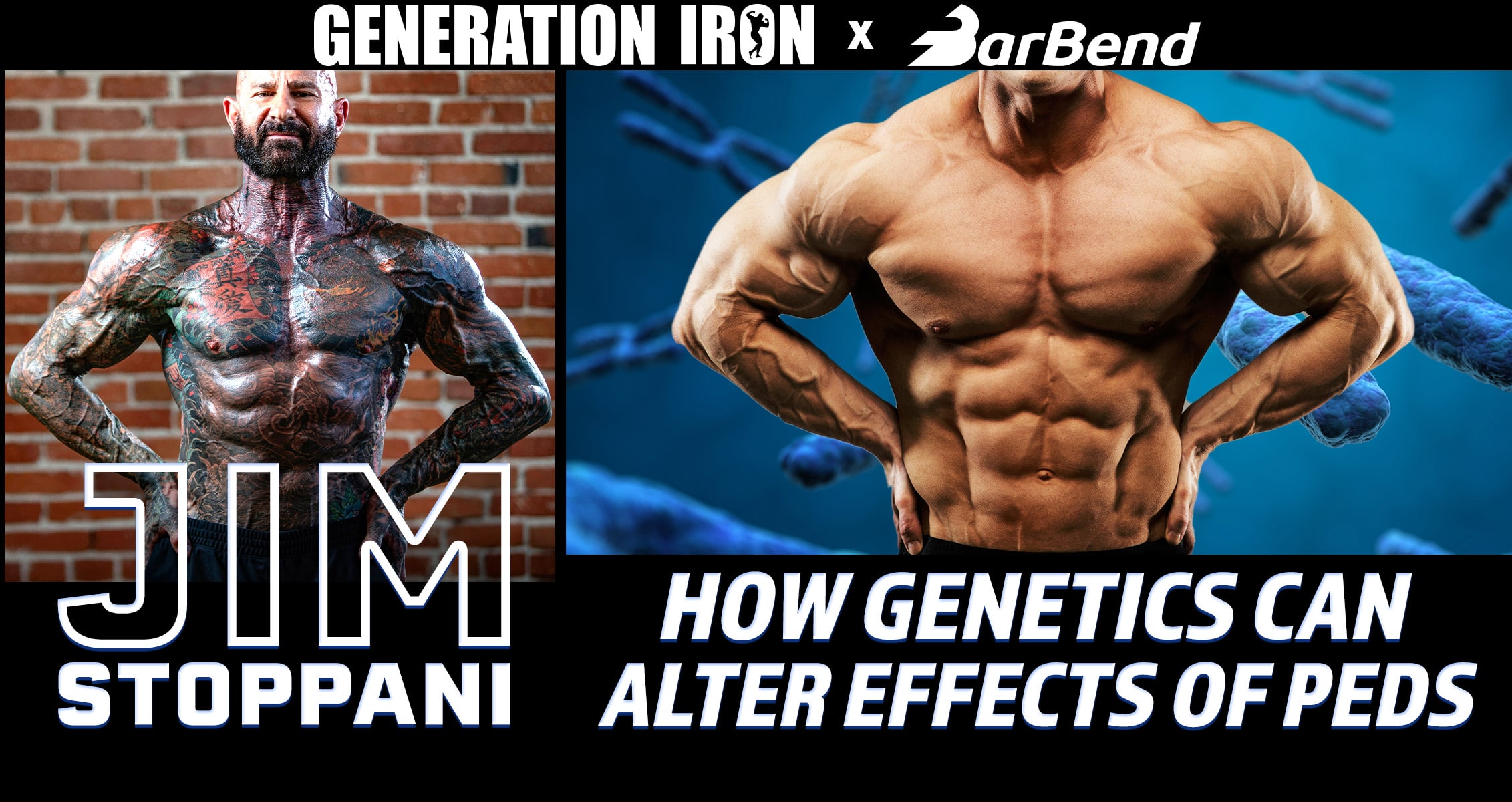
Jim Stoppani: The Role Of Genetics In PED Usage In Bodybuilding
[embedded content]
How genetics affect bodybuilding physiques and PED usage, explained
When we speak about some of the biggest legends in athletic history, the term “gifted” is often used. There’s another word for that – genetically blessed. Hard work can help accomplish great things but hard work combined with superior genetics creates bonafide unforgettable legends. To what degree does this have an effect in bodybuilding when it comes to nutrition, training, and physique aesthetic & size? And do genetics play a large role in how competitors’ bodies react to PEDs? We partnered with Barbend in our latest GI Exclusive interview to discuss with Jim Stoppani the role of genetics in bodybuilding and PED use.
It’s often said that genetics play a large role in bodybuilding. This can seem on the surface somewhat discouraging to aspiring bodybuilders. What’s the point of putting all of that work in if you simply don’t have the right genetics to compete with the best in the world? However, there have been pro bodybuilders that prove it is possible to break the mold. Even Arnold Schwarzenegger himself has admitted that his genetics were not ideal for the physique he desired (and eventually obtained).
Hard work can make up for less than ideal genetics. You’ll just simply have to work harder than other individuals. Then occasionally there is the rare breed of human who can push harder than anyone else while also having the best genetics of anyone else. Those become iconic untouchable legends – such as Ronnie Coleman.
So the big question is – just how far can genetics affect the outcome of a bodybuilder’s hard work? And in being transparent about the realities of the industry – how much do genetics affect the way PEDs react in a person’s body? We turned to Jim Stoppani to break it down with some of his knowledge.
How genetics affect bodybuilding physiques
Jim Stoppani confirms what many passionate fans and athletes already know – genetics are an unavoidable factor in success for bodybuilding. This actually expands out beyond our sport. Any athlete on the pro level can find improved success if they have “gifted genetics.”
To help explain this in simpler terms, Jim Stoppani uses core genetic traits as an example. Features such as eye color, hair color, and height are not something we can control. They are predetermined via our genetic code. We can’t “train” our eyes to turn blue. This is the same mentality behind bodybuilding physiques.
Some bodybuilders will react to training and diets differently than others. Some will find the simple act of hardcore training easier to bear. The debate of nature vs nurture will be ongoing for all of human existence. So it’s possible as a community we may misattribute genetics to something that is actually simply hard work and life experience (and vice versa).
But overall, Jim Stoppani’s simple example proves that genetics do have a baseline effect. If you give two bodybuilders the same diet, training routine, and supplements – they will not have the exact same physique outcome.
Can genetics make PEDs effect individuals differently?
Jim Stoppani also touches on PEDs such as steroids and how genetics may or may not affect the reaction our bodies have to these drugs. Stoppani explains that, of course, genetics will make drugs react different for each individual. This is actually a big part of the reason drugs like steroids are regulated and banned for athletic use.
In the United States, steroids can only be prescribed by a doctor. That very factor is evidence of how a drug can affect each individual differently. A doctor or medical professional needs to evaluate what your body can handle. It’s different on a case by case basis.
Jim Stoppani uses cigarettes as a more basic example of this concept. There is no doubt that cigarettes cause damage to the body and long term health effects. However, there will always be certain smokers who live to be 90. Conversely, there can be someone who never drank or smoked a day in his or her life who suddenly dies of a health emergency.
We can’t control genetics – but they control us. It’s a factor we must all consider when it comes to not only our ability in a sport like bodybuilding – but our health when taking advice as well.
Wrap Up
You can watch Jim Stoppani go into full detail about genetics in bodybuilding and how they can affect reactions to PEDs in our latest GI Exclusive interview segment above. Make sure to swing by every Monday for new Jim Stoppani explainer videos every week!
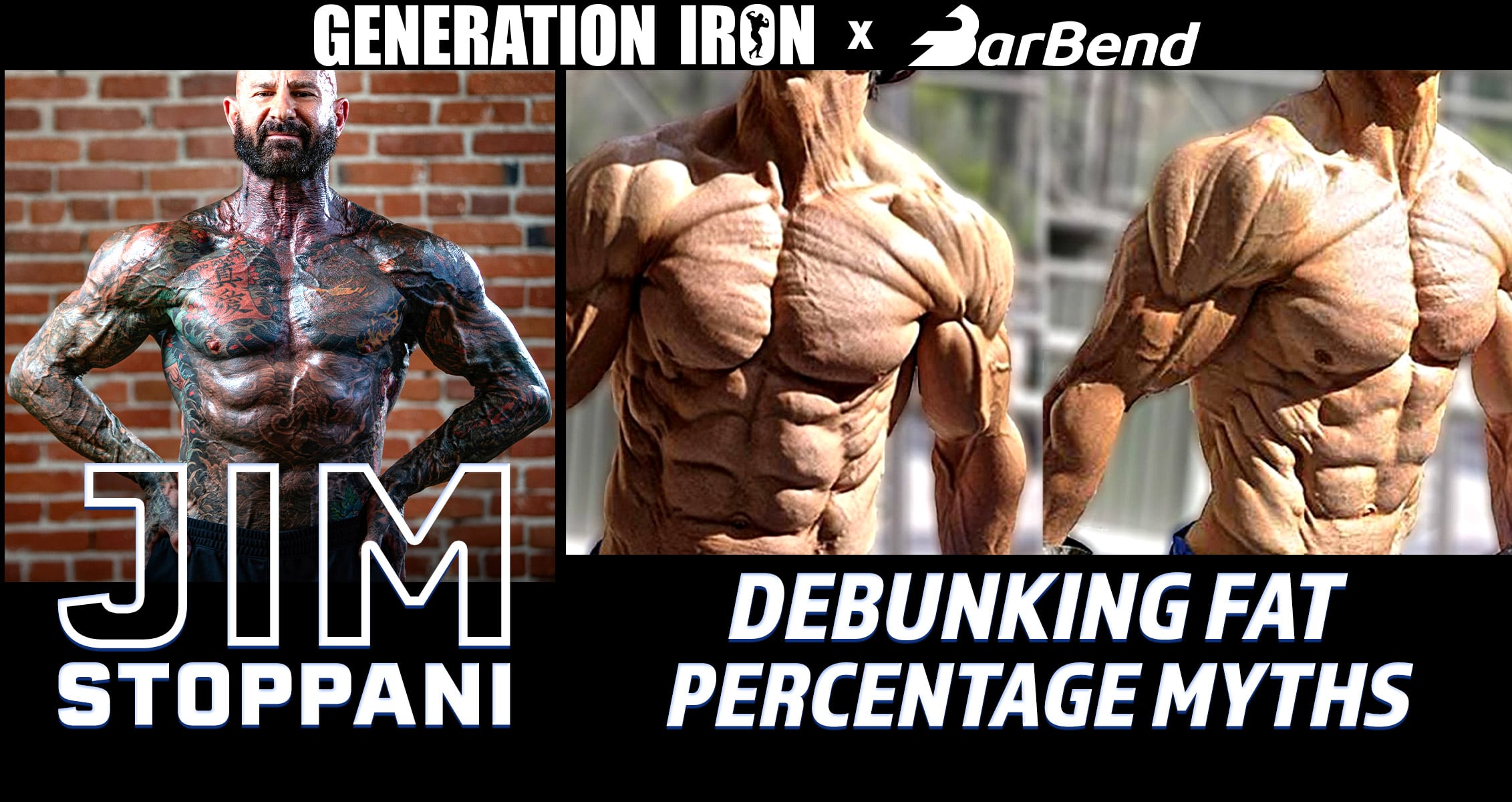
Jim Stoppani Debunks The Biggest Body Fat Percentage Myths
[embedded content]
Jim Stoppani explains body fat percentage realities for athletes vs average individuals.
Ronnie Coleman once stated that during his prime he held under 1% body fat. Many accused this as being a lie. That it’s impossible to bring your body fat percentage lower than three or four percent due to vital organ fats your body needs to function. But in the world of extremes such as bodybuilding, there are athletes who truly aim to reach these kind of goals. Is it really possible? In our latest GI Exclusive interview partnered with Barbend, Jim Stoppani debunks the biggest myths about body fat percentage and the real possibilities (and dangers) of extreme fat loss.
In the world of bodybuilding, getting as conditioned and shredded as possible is always the ultimate goal when stepping on stage. The hard work put into sculpting a physique can be shown best without soft fat hiding the “goods” so to speak. But not only is the general act of “cutting” for a competition dangerous, having unrealistic goals of extreme low body fat percentages is unhealthy as well. As an athlete, there’s nothing wrong with wanting to look conditioned – but where is the real line? How low can you go and stay healthy?
And even when opening up to the general public – the expectations on how a person “should” look has led to a variety of eating disorders and body dysmorphia. That’s why we connected with Jim Stoppani to talk about the real facts behind body fat percentage, what’s realistic and what myths we can debunk here and now. Let’s jump into it.
What is a normal body fat percentage range?
Body fat percentage is the relative amount of fat you are holding on your body compared to your overall weight and size. That’s why we speak in terms of percentages rather than specific units of measurements. Depending on your height and overall weight – the ideal numbers can be different.
So when it comes specifically to body fat percentage – the healthy amount is often much higher than individuals seem to realize. Jim Stoppani explains that the average healthy range of body fat tends to be somewhere between 15-20%. These values shift depending on if you are a man or a woman. Women tend to carry more body fat genetically.
Jim Stoppani, however, land squarely at 5% body fat typically. This is due to his consistent and fitness focused lifestyle. As you can see, that’s a big gap from the typical healthy average. And it’s this kind of gap that can lead an average non-athlete individual to expect a lower number. Jim Stoppani wants to clear the air for those who focus to heavily on their body fat percentage. If you are in a 15-20% range, don’t worry. You’re not fat. And it’s not a sign, generally, that you are unhealthy.
Could Ronnie Coleman’s below 1% body fat claims be true?
It’s impossible to know whether or not Ronnie Coleman’s past statement about being below 1% is true. However, it is possible despite what many would have you believe. Typically, it’s understood that an athlete cannot go below 3-4% body fat due to the vital fat your organs need to function. This is true. But that doesn’t mean there isn’t a way to bring that percentage lower.
Jim Stoppani explains that Ronnie Coleman, theoretically, could have gotten his body fat down to below 1%. However, to do that he would have had to turn to some serious drugs. No only that, but the very act of burning such vital fat is extremely unhealthy and dangerous. So yes, it is possible. But no, you shouldn’t aim for such a goal.
Jim Stoppani can’t speak for Ronnie Coleman, but he does have a fair understanding about pro bodybuilding. He reminds us that it’s an extreme sport and we’ve seen athletes go to extreme measures to succeed. Ronnie himself shattered the barrier of just how massive and shredded a bodybuilder could be on stage. So it’s not beyond reason to think he would have pushed hard to some dangerous areas to bring his body fat down extremely low as well.
Ultimately, this is all speculation. We can’t determine the validity or the actions of Ronnie Coleman regarding his body fat claims. But it is important to know the truth. While it’s not naturally possible, there are ill-advised ways to bring your body fat below 3%.
When should you worry about having too high body fat?
So how much fat is too much fat? When should you start actually worrying about that percentage number as an average non-athlete individual? Jim Stoppani explains that you should only be worried if you are over 30% body fat. That’s when you are considered obese. Anything below that should not be a worry from a general health standpoint. Unless you are trying desperately to look muscular and shredded – don’t get too bent out of shape over a 16% or 18% body fat level.
Wrap Up
Whether you are a competitive bodybuilder or just a fan, it’s easy to get sucked into the alternate reality of body fat percentages in bodybuilding. However, it’s important to remember that there is a wide difference between average healthy body fat percentages and what pro athletes do (and risk) to be the best in the world.
You can watch Jim Stoppani explain in detail, and debunk some common misconceptions, in our latest GI Exclusive interview segment above.
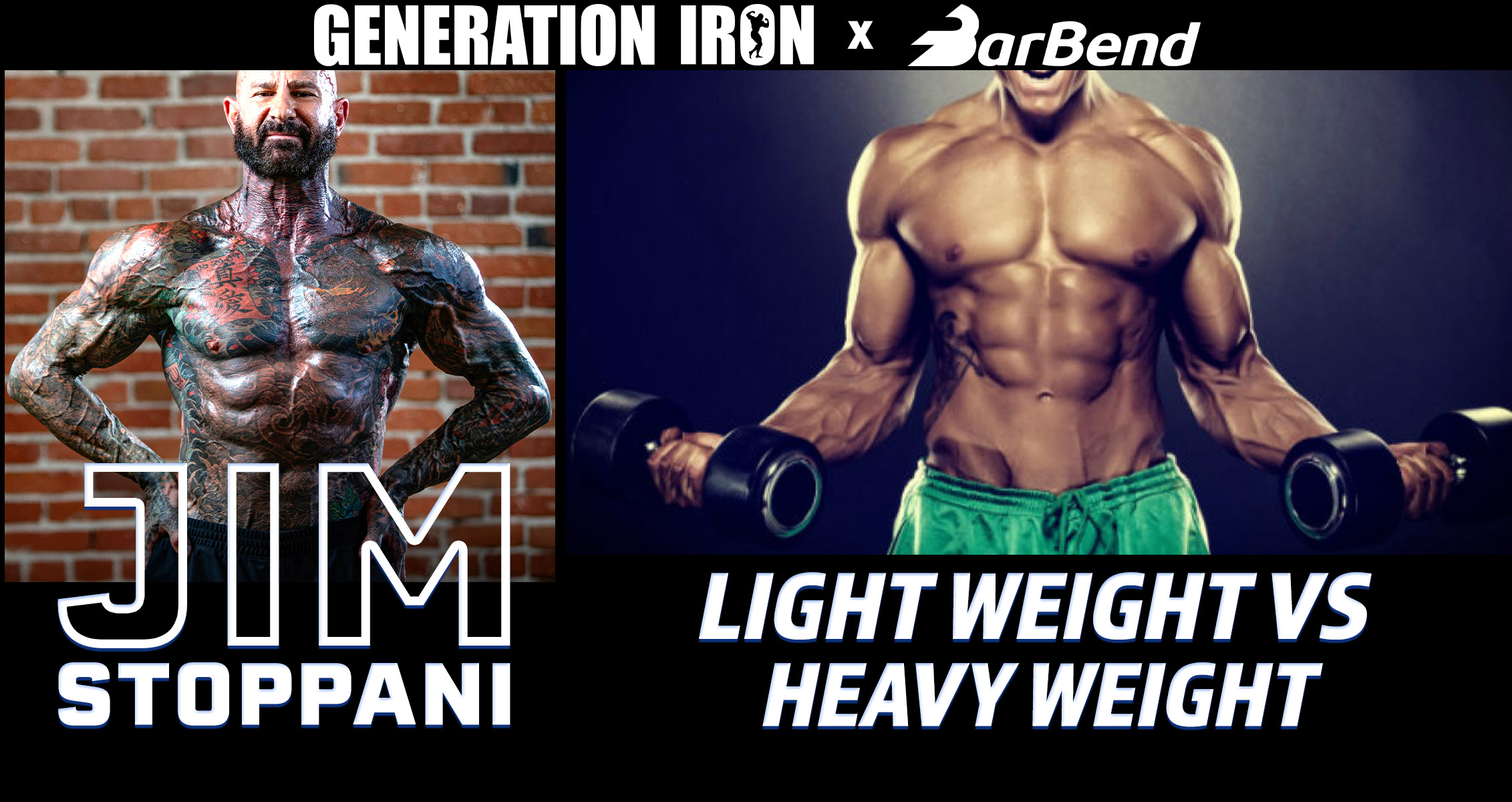
Jim Stoppani Answers: Should You Lift Light Weight Or Heavy Weight For Optimal Muscle Growth?
[embedded content]
Jim Stoppani explains the light weight vs heavy weight debate and which is best for optimal muscle growth.
For those who first start weightlifting, it might seem obvious that the more weight you lift the more muscle you gain. But that’s not necessarily true. There are various ways to build muscle and in today’s age of exercise science the tactics have become even more varied. But in the bodybuilding world, the biggest debate often comes down to light weight vs heavy weight. Aka – do you lift light weight with high reps or heavy weight and low reps? Both tactics are used by successful pro bodybuilders – proving their validity. But is one truly better than the other? In our latest GI Exclusive, Jim Stoppani explains the light weight vs heavy weight debate and breaks down which is best for ultimate muscle growth.
For those who love bodybuilding and weightlifting, there is nothing more exciting than seeing someone lift an insane amount of weight (or performing it yourself). It’s the ultimate proof of your ability in the gym. A showcase of just how strong you’ve become with your years of training. From an outward glance, it then seems that lifting hardcore heavyweight is the most inspiring and motivational tactic a bodybuilder can commit to.
However, other bodybuilders have shown time and time again that light weight can be an effective tactic as well. Dexter Jackson, for example, is a former Mr. Olympia champion and also the most decorated bodybuilder in the history of the sport. He has always promoted light weightlifting at high reps over heavy weight. In fact, he claims it is the reason he was able to continue his pro career into his 50s.
So what’s the science behind this? Can we scientifically prove that one style of training is more effective than the other? We turned to Jim Stoppani to help answer the question.
Comparing muscle protein synthesis of light weight vs heavy weight
Jim Stoppani starts off by mentioning and study that compared two lifting tactics. One group of individuals lifted 30 reps of light weight. The other group lifted five reps of heavy weight. The study was focusing on muscle protein synthesis – a key factor in muscle growth.
What the study concluded, Jim Stoppani explains, is that both groups achieved the same amount of protein synthesis. But there was a catch. This was only true if the individual trained to failure. This study further cements the statements made previously on Straight Facts by Jerry Brainum. Particularly for lifting light weight, training to failure is necessary for optimal muscle growth.
This is easier said than done. Many individuals who lift light weight at high reps often believe they are hitting failure but are actually missing the mark. The mind is very powerful and can psych a person out from achieving the true limit of their strength abilities. More often than not, those who struggle building mass muscle with lightweight tactics simply aren’t training to failure enough.
So does this mean light weight and heavy weight training are equal?
With this study, it seems that training light weight or heavy weight comes down to personal preference – as it yields the same results. Jim Stoppani points out that this isn’t necessarily true. Stoppani explains that protein synthesis is not the only factor in muscle growth.
For example, Jim Stoppani explains how lifting heavier weight leads to increased strength. That increased strength allows for lifting even more weight. This all compounds to allow for increased muscle growth. This is like compound investing in the stock market rather than paying the same regular payment into a savings account.
On the flip side, Jim Stoppani explains how light weight at high reps is more effective at increasing blood flow. This bring more nutrients to the muscle – which helps bring benefits towards increased muscle growth.
Conclusion: combine light weight and heavy weight for best results
Ultimately, this is why Jim Stoppani always recommends a combination of both tactics. Not only does a change up to your routine every 4-6 weeks help prevent plateaus, but the mix of light weight and heavy weight will bring added benefits that would not be found in sticking only to one tactic.
Weightlifting and bodybuilding progress is never about finding one routine and sticking with it forever non-stop for the rest of your life. It requires constant variety, adaptation, and change to keep growth from plateauing.
You can watch Jim Stoppani go into full detail about light weight vs heavy weight training in our latest GI Exclusive interview segment above. Make sure to stick around each Monday for new episodes of Jim Stoppani’s explainer videos.
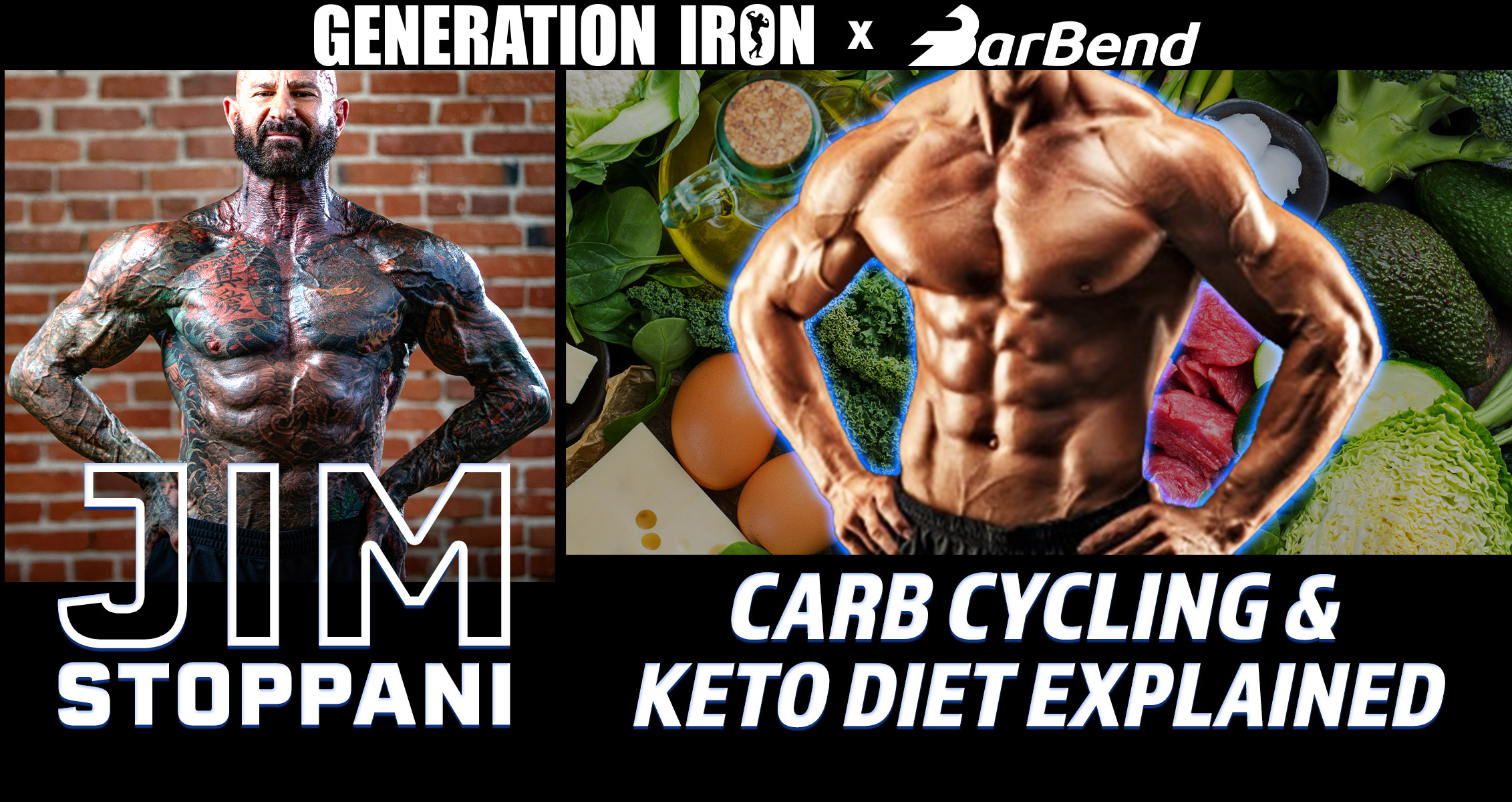
Jim Stoppani: Keto Diet Vs Carb Cycling, Which Is Best?
[embedded content]
Jim Stoppani breaks down the keto diet and carb cycling in his latest explainer.
The keto diet is one of the more popular diet trends circulating through the fitness world over the past decade. The basic concept is to cut all carbs out of your diet and increase dietary fat. But is this popular trend all it’s cracked up to be? And how does it compare to the tried and true method of carb cycling often used by athletes? We partnered with Barbend and turned to exercise physiologist Jim Stoppani for a full explainer guide on keto diet vs carb cycling – and the overall role of carbs in nutrition for those looking to be fit and healthy.
In the current internet age, it’s become so much easier to get information to stay healthy and find ways to lose weight. But it’s also very easy for misinformation to spread and popular trends to take hold that might not be the best for you. That’s why it’s important to treat every super popular diet trend with caution. People have been singing the keto diet praises for years. And in fact, it holds a lot of similarities to older diet systems like the Atkins diet. But for those who want to handle fitness and health the right way – is this diet truly a good option?
Jim Stoppani breaks the diet down in our latest video conversation and also compares it to carb cycling – the act of cycling in and out of low and regular carb intake. What is the truly best way to handle carbohydrates in a fit diet? Let’s break it down.
What is the keto diet?
Jim Stoppani explains that the keto diet’s main factor is to cut carbs out of your diet completely. You then focus on an increase in dietary fats (the healthy ones). The goal of this is to rewire the way your body works. Instead of getting energy from glucose (carbs), your body will start pulling that energy from ketones.
Ketones are found in fat – and so when your body starts using ketones for energy, you start burning fat much more effectively. This is why the diet has become so popular. It’s a powerful method of losing weight fast (if you stick to it firmly).
Fun note – when your body is in ketosis and burning ketones/fat rather than glucose/carbs, you’ll find that your breath smells bad and in some extreme cases your sweat will also start to take on a different smell.
Should you use the keto diet?
While the results are proven to lead to relatively quick fat loss, Jim Stoppani warns against this diet being a go-to for those looking for long term fitness and health. Stoppani explains that the keto diet is great for a quick weight loss over the course of four to six weeks. So for those looking to fit into a wedding dress or look good on the beach during vacation, this diet can work wonders.
But for those who are looking to lose weight, keep the weight off, and remain health and fit – this diet is not the best option. Jim Stoppani explains:
“The last thing you want to do is go from eating 400 carbs a day to zero… and really that’s why keto is so popular because it’s used for short term fat loss. It’s great for losing a tone of weight in six weeks. But now that you’ve cut out all your carbs and now you hit a plateau, where do you go? You’ve got no more carbs to cut out. What are you going to cut out? Protein? You’re going to start cutting protein now?”
His main point is that the keto diet doesn’t work in the long term – especially for those who have more ambitious fitness goals like bodybuilders or athletes. That’s why Jim Stoppani recommends slowly cutting out carbs in phases.
Focus on cutting only 100 carbs first, you’ll lose weight if you do it right. Then after that plateaus, cut out another 100 carbs. If the keto diet focus on a slow transition out of carbs it would be more sustainable.
So what about carb cycling?
Jim Stoppani far prefers the tried and true carb cycling method for cutting weight. He’s used it in the past for years and finds it very effective. The key goal here is to cycle on and off with low carb days and then high carb days. There are various ways you can set up this schedule to work best for you.
The reason for the cycling is to prevent your metabolism from crashing. Suddenly cutting carbs will eventually lead to a plateau as your metabolism goes into a sort of “starvation mode” – suddenly you burn less calories at rest than before. This makes it harder to lose weight after a short term period of quick fat loss.
Carb cycling prevents this – while still cutting down overall carbs in your diet. It keeps your metabolism working faster while also cutting out glucos and focusing on burning fat instead.
Wrap Up
In Jim Stoppani’s eyes, the keto diet is no different than any other “lose fat fast” plans. They work great in the short term but likely lead to fluctuating weight in most people who try it. It’s hardly sustainable and not a long term solution. Carb cycling can be a great alternative for those looking to reduce carbs and burn fat. In either case – Jim Stoppani’s suggestion is to ease out of carbs instead of crashing down to zero instantly.
You can watch Jim Stoppani explain in full detail by watching our latest GI Exclusive interview segment above!
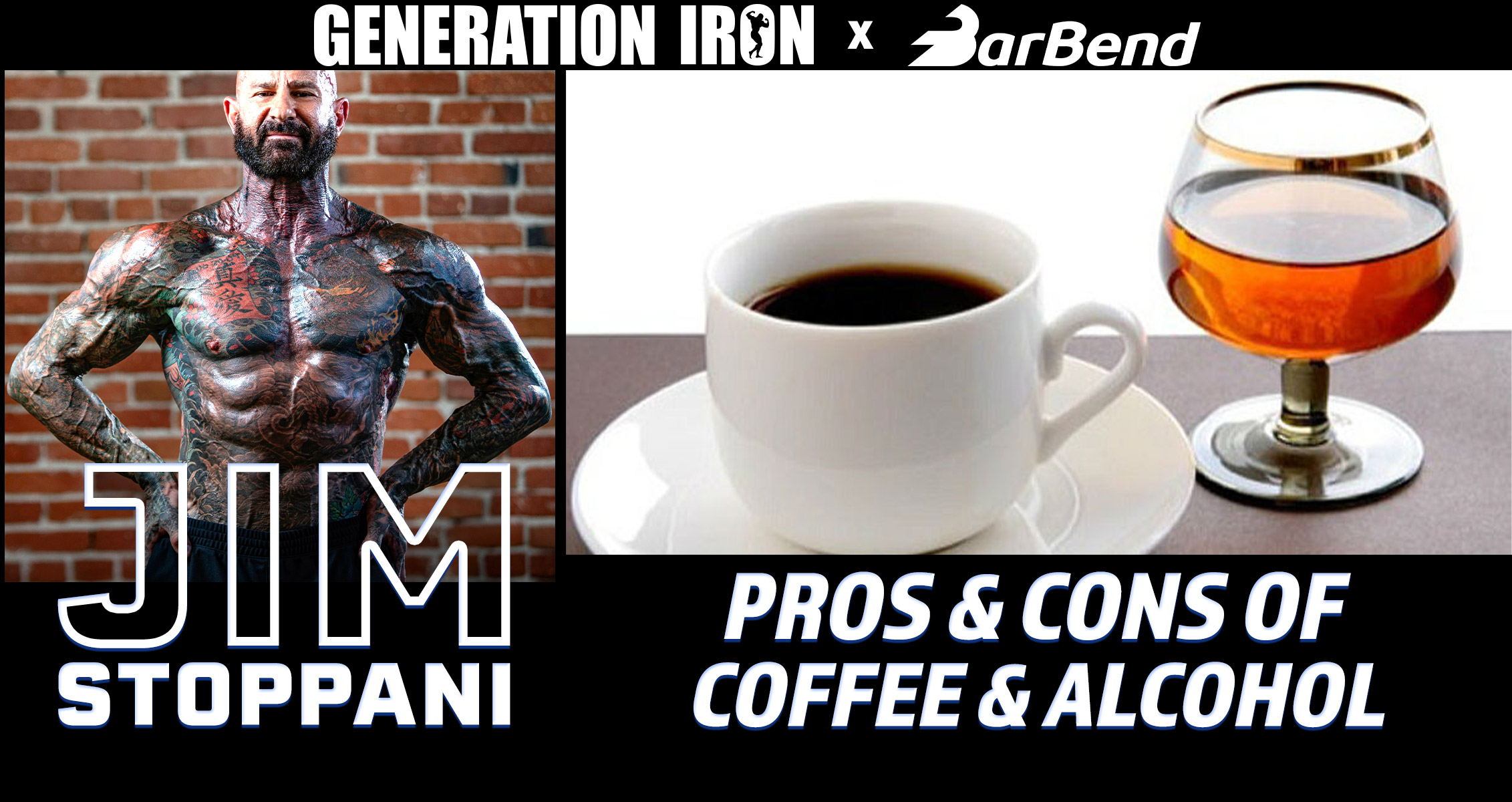
Jim Stoppani: Pros & Cons Of Coffee and Alcohol
[embedded content]
Jim Stoppani answers: How does coffee and alcohol affect your general fitness and health? And should pro bodybuilders keep them in their diets?
Alcohol and coffee can be considered two of the biggest vices in the modern world. They are so embedded into culture that no one bats an eye to the affects of both when taken to extremes. For those that are health conscious and especially those who want to be elite bodybuilders – can these two products say in a healthy diet? We turned to exercise physiologist Jim Stoppani for a full explainer guide on the pros and cons of keeping coffee and alcohol in your diet.
For the average adult, coffee and alcohol consumption is a casual and regular occurrence. Of course, so long as it is in moderation. Chronic diseases such as alcoholism are a consistent problem in many countries – certainly in the United States. But beyond the extreme side of substance abuse, are there long term dangers from casual alcohol and coffee consumption? Jim Stoppani believes that these substances are not as taboo as some alarmists would have you believe.
Pros & Cons of Coffee
During our video interview, Vlad Yudin mentions how there are those who warn of coffee addiction and the negative effects this can have on a person. Yet many athletes and bodybuilders will use coffee as a form of natural pre-workout. A way to boost energy for that next training session. Should coffee be cut from a health conscious person’s diet? Is coffee and caffeine bad for your health?
“I say good,” Jim Stoppani comments during the conversation. Of course, he mentions, it will always depend on the individual person and their personal goal. Overall, there are proven health benefits to drinking coffee (and consuming caffeine in general). Coffee itself can be an antioxidant. And caffeine has been proven to help lessen cognitive decline throughout the day.
Studies also show that smaller doses more frequently throughout the day fairs better than big doses once or twice a day. So for those who pound down morning coffee – perhaps an alternate habit could be more optimal.
Jim Stoppani doesn’t like to demonize caffeine. It won’t kill you and it wont kill your gains. However, drinking coffee at too young an age can be more dangerous. Stoppani explains that consuming regular amounts of caffeine under the age of 18 has a direct effect on the development of the brain. It can change your brain connections.
Another reason you might not want to have coffee or caffeine in your diet is down to personal situations. If you have cardiovascular or heart health issues – avoiding caffeine is a better choice. And those who suffer chronic anxiety might find that caffeine only raises their anxiety throughout the day.
Pros & Cons of Alcohol
The obvious big danger about alcohol is abuse. It can be addictive and also cause serious damage to your liver and heart with long term abuse. Also binge drinking can lead to dangerous situations when your cognitive abilities start to blur.
However, beyond those very real and serious risks with long term abuse – Jim Stoppani sees no issue with alcohol in a fit person’s diet. It’s completely possible to remain health and fit while also enjoying the occasional drink.
Jim Stoppani explains that at the end of the day it’s all about your macros. If you are a elite bodybuilder looking to have 3% body fat and dominate on stage – then maybe it’s best to avoid alcohol for the majority of your career. But for the larger fitness community at large – it all depends on your personal goals. Alcohol calories certainly add up if you’re not careful.
Ultimately, Jim Stoppani wants to remind those watching that you only live once. “What’s the point of being fit?” Stoppani rhetorically asks. “So we can live longer and enjoy life!”
Wrap Up
At the end of the day, Jim Stoppani explains that neither coffee or alcohol are inherently unhealthy for you. Unlike, let’s say, smoking a cigarette, one drink will not damage your body. It’s all about moderation and considering your personal goals. Know your own health records. Know your own habits. Keep them under control.
Stoppani believes you can be not only health but very physically fit while also enjoying coffee and alcohol. You can watch Jim Stoppani explain in full detail by watching our latest GI Exclusive video segment above.
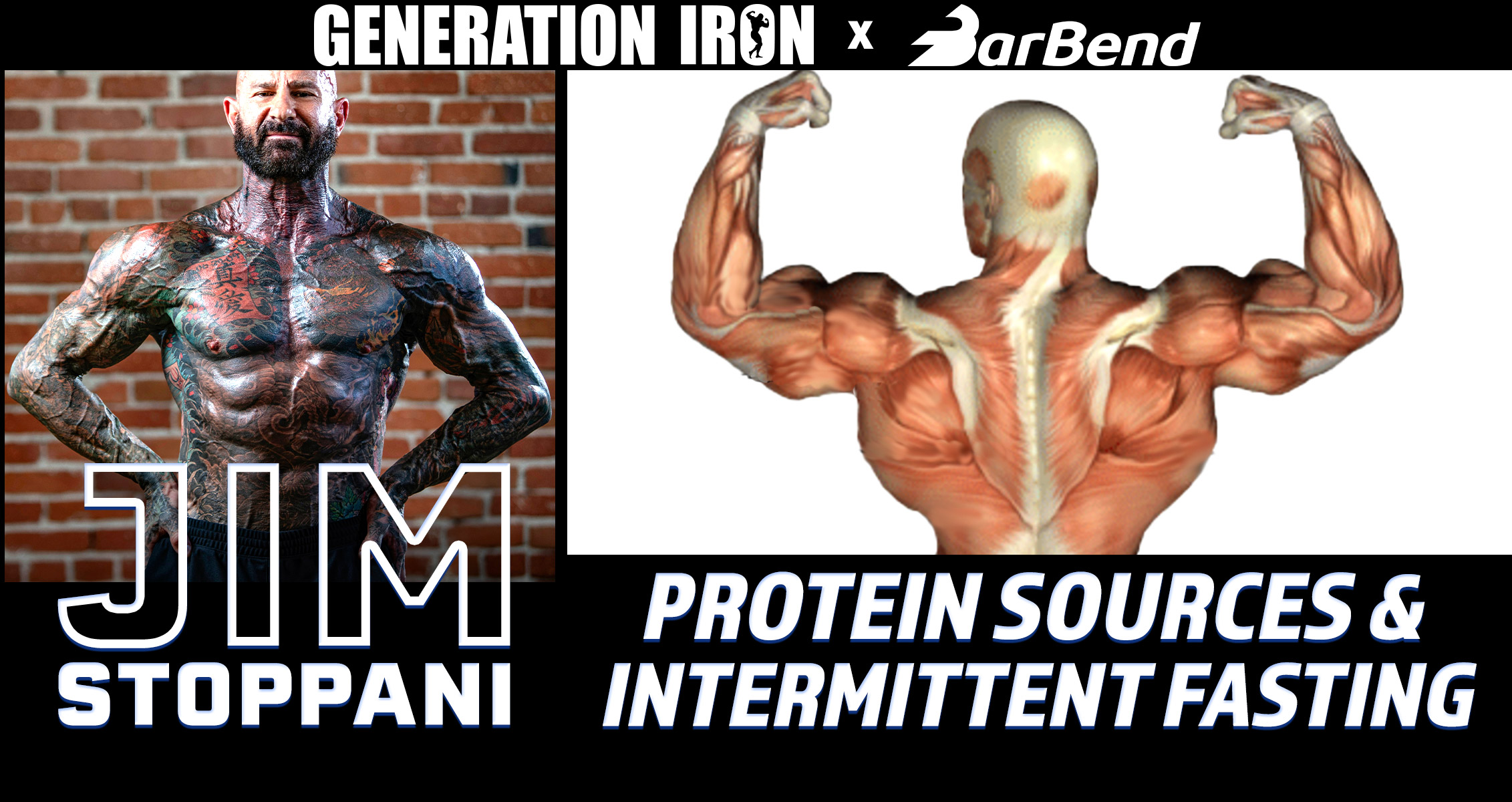
Jim Stoppani: Protein Sources & Intermittent Fasting, Explained
[embedded content]
Jim Stoppani breaks down the pros and cons of different protein sources and evaluates intermittent fasting.
Not all protein is created equal. If you are a bodybuilder or athlete, you are most likely aware of the different protein supplement formulas that exist on the market. The key three being whey protein, casein protein, and beef protein. We turned to Jim Stoppani, an exercise physiologist to break down just when is the right time use each kind of protein. He also discusses how intermittent fasting works – and when it should be used. In our latest GI Exclusive, Jim Stoppani explains the pros and cons of each protein source and if the growing fad of intermittent fasting is legit.
In 2022, there are more supplement companies than ever before. What was once a niche market has exploded alongside the health boom. There are now thousands upon thousands of brands, product types, and formulas. How does someone know what to choose? This week, as we speak with Jim Stoppani, we focus primarily on protein powder. What is the right protein powder to take when looking to build muscle?
Whey Protein Powder vs Casein Protein Powder
Whey protein powder is surely the most popular protein supplement on the market today. But that doesn’t mean it should be your single choice of protein supplement. Jim Stoppani breaks down the difference between whey and casein protein – and how both can benefit you.
As Jim Stoppani explains it, casein protein powder use to get a bad wrap. This was because it breaks down in your body slower. Due to this, many would turn to whey protein powder instead. It gets into your blood faster – thus helps you build muscle faster for your workouts.
But as time and studies have grown – it has become clear that casein protein has its benefits for those looking to build muscle. Nothing has changed about the two protein sources per se. Instead, we have a better understanding of the human body and how it uses protein.
Jim Stoppani explains that the fast acting whey protein is both a blessing and a curse. It is generally accepted that whey protein leaves your blood stream within two hours. This is good in the short term. But modern science has also recommended that casein protein is a great addition to your supplementation as well.
Jim Stoppani breaks down how casein protein is like an onion. It has layers that take longer to break down into your body. This is good in the long term as your body recovers to build back muscle. This is why it’s best to have either a protein powder blend formula or to take your own combination of both whey and casein protein powder. In tandem, you get the best of both worlds for optimal results.
What about beef protein supplements?
Jim Stoppani also takes a look at beef protein powders. The first fact he wants to make clear – beef protein powder is not ground up meat. In fact, it’s collagen – beef cartilage. Why does this matter? Unlike whey or casein protein – beef protein does not provide an anabolic benefit for the body.
Does this mean you shouldn’t take beef protein? It’s certainly less in vogue than it once was. But of course, all protein sources still provide the core element of protein your body needs. Particularly when you are resting and sleeping for recovery. That being said, those who are looking to make real muscular gains on the level of a bodybuilder should likely turn towards the other options.
Intermittent fasting and bodybuilding
Jim Stoppani also touches upon intermittent fasting. This diet trend, which is defined by having short term periods of fasting, has become extremely popular over the past decade. But is it simply a long term fad? Or does it have real benefits for both health and weight loss?
Stoppani explains that intermittent fasting is essentially something we do naturally every day. When we sleep, we forego eating for at least six to eight hours. That’s fasting. But there are some great health benefits to be had if we extend that time period a bit longer.
Jim Stoppani details how we can simply add 2 hours to the front and back of our sleep schedule to ensure somewhere between 10 and 12 hours of not eating. This is a great tool for weight loss. However, Stoppani would not recommend such a diet to an active bodybuilder. This kind of fasting goes directly against the goal of building muscle. It puts you in such a deficit that muscle loss is inevitable. Essentially, you would be actively pulling back and forth and slowing down your muscle building goals unecessarily.
That doesn’t mean Jim Stoppani is against intermittent fasting completely. He understands why it’s such a popular weight loss diet. It’s effective and it’s user friendly. Other diets demand you “do the math” by counting calories or other nutrient values. It puts people in the position to constantly stress themselves out. “If I eat this cookie now, maybe I can skip dinner and then later have a light salad.” It’s these kinds of thoughts that make dieting hard.
Intermittent fasting makes things easy. Everything is a yes or no question. Are you currently fasting? Then don’t eat. Are you in your “open” period for eating? Then go ahead and have that cookie. Intermittent fasting allows for more leniency on what kinds of food you eat. Of course, Jim Stoppani further explains that doesn’t mean you can eat burgers and chocolate all day. But it’s certainly less strict than other diet options.
Wrap Up
Jim Stoppani has the knowledge and research to back up the reason behind why things work and others don’t. That’s why his explainers on both protein sources and intermittent fasting are so valuable. Understanding the why behind the how can help encourage motivation behind these tactics. Make sure to check out Stoppani’s full explainer in our latest GI Exclusive segment above.
- 1
- 2
